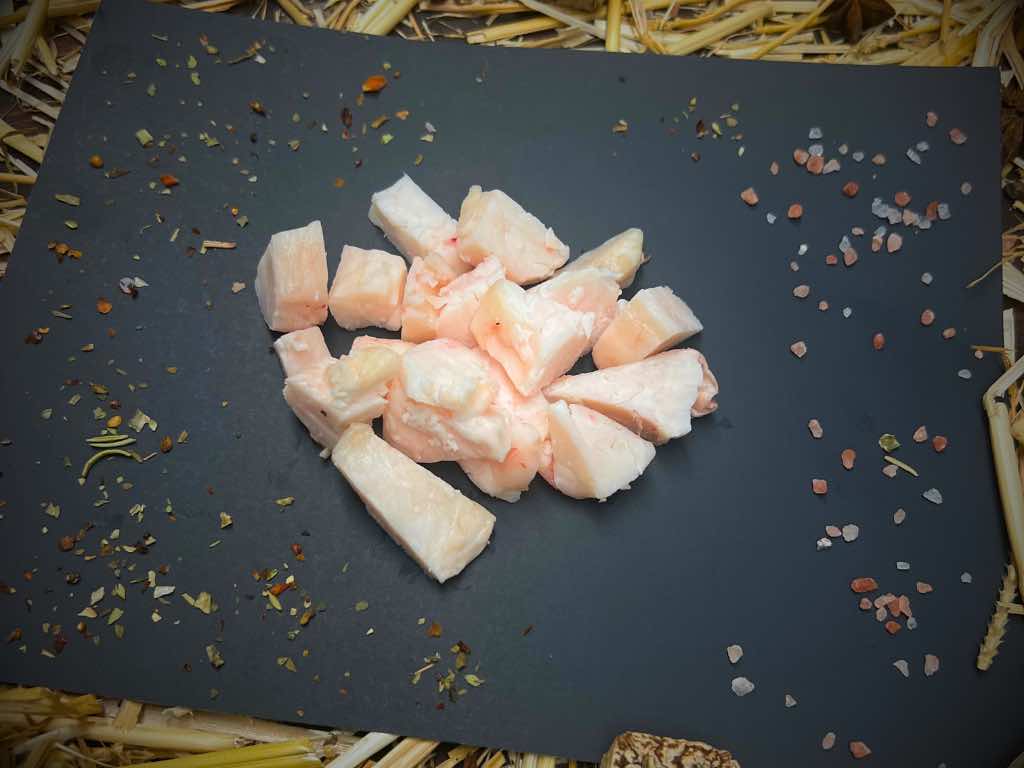
Beef Suet: The Secret Ingredient Every Cook Should Know
|
|
Time to read 4 min
Welcome to One Stop Halal!
Written by: Samir P.
|
|
Time to read 4 min
Beef suet, a traditional ingredient cherished in kitchens for centuries, remains an essential yet often overlooked component in the culinary world. This solid, white fat found around the kidneys and loins of cattle is not just a byproduct of beef processing; it’s a versatile ingredient that can elevate a wide range of dishes, from classic pastries to rich, savory meals. In this blog, we’ll delve into beef suet, its nutritional benefits, how to render it, and the myriad ways you can incorporate it into your cooking.
Beef suet is the raw, hard fat located around the kidneys and loins of cattle. Unlike other fats, suet has a unique composition makes it particularly suitable for specific culinary applications. When rendered, it becomes tallow, a stable cooking fat with a high smoke point, making it ideal for frying and roasting.
Historically, beef suet has been a staple in traditional British cuisine, famously used in dishes like mincemeat and savory pies. Its ability to create a crumbly, flaky texture in pastries has made it indispensable in baking. Beyond baking, suet's high melting point and rich flavor contribute depth to savory dishes like stews, sausages, and modern culinary innovations.
While beef suet is high in saturated fats, it's important to note that not all fats are created equal. The fats in suet can be beneficial when consumed in moderation as part of a balanced diet. Here are some critical nutritional aspects:
Finding high-quality beef suet may require visiting a local butcher or specialty meat shop. Ensuring that the suet comes from grass-fed, pasture-raised cattle is essential, as this can significantly affect the flavor and nutritional profile. Some online retailers also specialize in grass fed suet products, which can be shipped directly to your door.
Before using beef suet in cooking, it must be rendered into tallow. Rendering is slowly melting the fat to remove impurities, leaving behind pure beef tallow, which can be stored for future use. Here’s how to render beef suet:
Beef suet is incredibly versatile, finding its way into both sweet and savory dishes. Here are some popular and innovative ways to use beef suet in your cooking:
Welcome to the Home of the Halal Beef. We carry various beef cuts that are hard to find elsewhere. We deliver to your doorstep anywhere in the United States within 1-2 business days.
Beef suet is a remarkable ingredient with a rich history and a wide range of culinary applications. From traditional British puddings to innovative modern dishes, suet’s versatility, flavor, and nutritional benefits make it a valuable addition to any kitchen. Whether you’re rendering your own suet into tallow or experimenting with suet-based recipes, embracing this traditional fat can open up a world of delicious possibilities. So next time you’re at the butcher or preparing a beef dish, consider asking for some suet. With its rich flavor and culinary potential, it might become your new secret weapon in the kitchen.

© 2025 One Stop Halal, Inc.